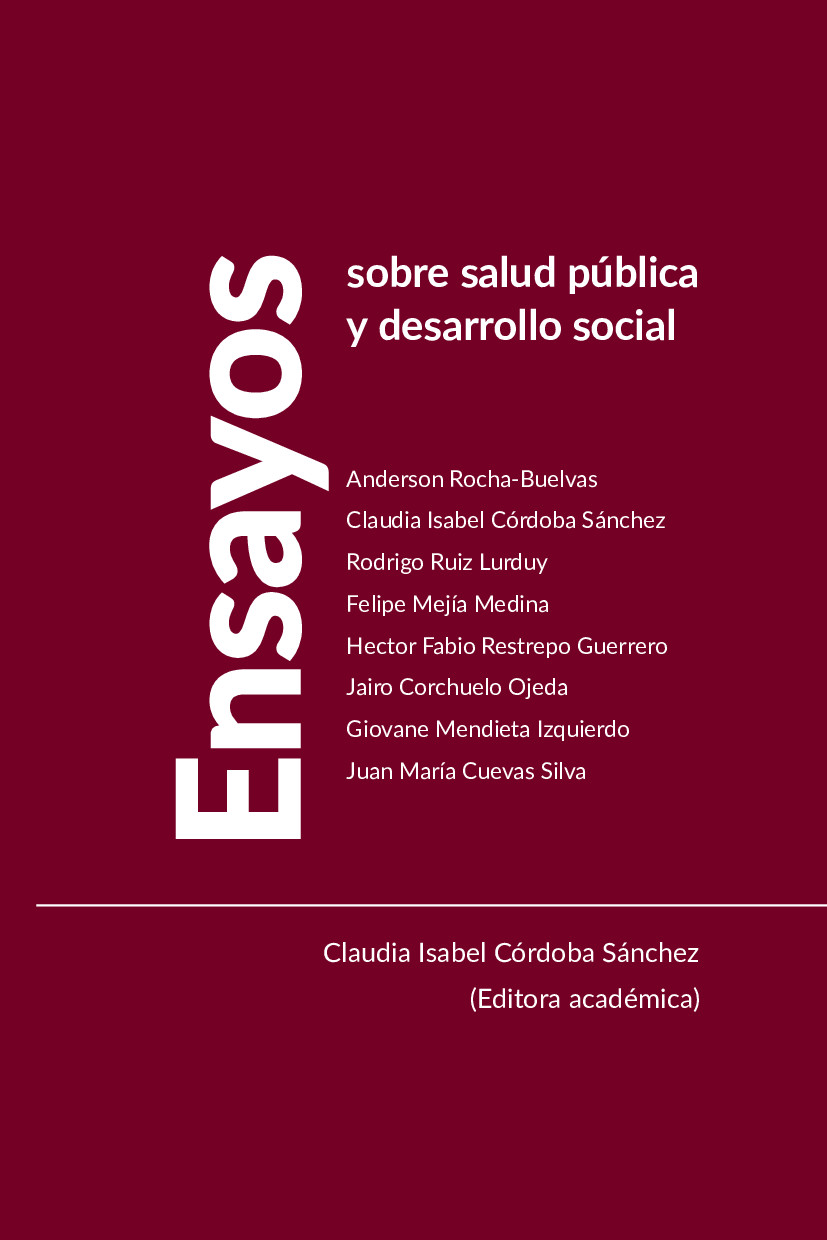Resumen
El proceso de comunicación entre madre-bebé se caracteriza por un intercambio recíproco de emociones, sensaciones, y afectos que se evidencian en diferentes repertorios de interacción en los que emergen respuestas que se expresan en una gran variedad de formas, a saber: el cruce de miradas, las caricias, sonrisas y demás movimientos corporales. La emergencia de estas respuestas emocionales se ha estudiado mediante escalas de medición temporal en tiempo real y en tiempo de desarrollo. La evidencia empírica muestra cómo durante este proceso aparecen emociones en la comunicación madre – bebé que seguirán patrones de estabilidad y transformación. El presente documento presenta una revisión de literatura sobre sistemas dinámicos en psicología y su relación con la comunicación emocional en la diada durante los primeros meses de vida del infante.
Licencia
Los autores deben declarar la no existencia de conflictos de intereses ya sea por motivos de financiación del proyecto del cual es resultado el artículo; así como por motivos intelectuales, académicos, morales e investigativos.
La Revista de Investigaciones Andina se acoge a las normas éticas para publicaciones dadas por el COPE: http://publicationethics.org/resources/code-conduct
Citas
Baratgin, J., y Politzer, G. (2006). Is the mind bayesian? The case for agnosticism. Mind& Society, 5(1), 1-38
Bloom, K., Russell, A. y Wassenberg, K. (1987). Turn taking affects the quality of infant’s vocalizations. Journal of Child Lenguage, 14, 211-227.
Bronfenbrenner, U. (1979). The ecology of human development: Experiments by nature and design. Harvard University Press.
Camras, L. A. y Witherington, D. C. (2006). Dynamical systems approach to emotional development. Developmental Review, 25, 328–350.
Camras, L.A. (1991). Conceptualizing early infant affect. En K. Strongman (Ed.), International review of studies on emotion (pp. 16-28). Wiley.
Carver, C. S., Sutton, S. K., y Scheier, M. F. (2000). Action, emotion, and personality: Emerging conceptual integration. Personality and Social Psychology Bulletin, 26(6), 741-751.
Castro, J. y Flórez, R. (2007). La emergencia del lenguaje y los sistemas dinámicos. Revista Colombiana de Psicología, 016, 185-202.
Castro, J. (2012). Una revisión de las relaciones entre los sistemas dinámicos y la psicología del desarrollo. Suma Psicológica 19(2), 109-130
Castro-Martínez, J., Sierra-Mejía, H., y Flórez-Romero, R. (2012). Una revisión de las relaciones entre los sistemas dinámicos y la psicología del desarrollo (A review of relations between dynamic systems and developmental psychology). Suma Psicológica, 19(2), 109-130.
DeHart, G. B., Sroufe, L. A., y Cooper, R. G. (2000). Child development: Its nature and course. McGraw-Hill.
Ekman, P. (1995). Silvan Tomkins end facial expression. En V. Demos (Ed.), Exploring affect: The selected writings of Silvan S. Tomkins (pp. 209-214). Cambridge University Press.
Elias, G. y Broerse, J. (1995). Temporal patterning of vocal behaviour in mother-infant engagements: Infant initiated “encounters” as units of analysis. Australian Journal of Psycology, 47, 42-46.
Fogel, A., y Thelen, E. (1987). Development of early expressive and communicative action: Reinterpreting the evidence from a dynamic systems perspective. Developmental Psychology, 23(6), 747-761.
Fogel, A. (1993). Developing through relationships. University of Chicago.
Fogel, A., y Garvey, A. (2007). Alive communication. Infant Behavior and Development, 30(2), 251-257
Garvey, A. y Fogel, A (2008). Emotions and communication as a dynamic system. Espaciotiempo, 2, 62-73.
Granic, I. (2005). Timing is everything: Developmental psychopathology from a dynamic systems perspective. Developmental Review, 25(3), 386-407.
Guerrero, E. (2013). Sistemas dinámicos aleatorios y sus atractores [tesis de maestría, Centro de Investigación en Matemáticas], Guanajuato.
Hartle, J. B. (2003). Gravity: An introduction to Einstein’s general relativity.
Heylighen, F. (2008). Complexity and Self-organization. En M. J. Bates y M. N. Maack (Eds.), Encyclopedia of Library of Information Science. Free University of Brucelas.
Howe, M. L. y Lewis, M. D. (2005). The importance of dynamic system approaches for understanding developmen. Develpmental Review, 25, 247-251.
Hsu, H. y Fogel, A. (2001). Infant vocal development in a changing mother-infant communication system. Infancy, 2, 87-109.
Hsu, H. y Fogel, A. (2003). Stability and transitions in mother-infant face to face communication during the first 6 monts: A microhistorical approach. Developmental Psichology, 39, (6), 1061-1082.
Jack, R. E., y Schyns, P. G. (2015). The human face as a dynamic tool for social communication. Current Biology, 25(14).
Jaffe, J. Beebe, B. Feldstein, S. Crown, C.L. y Jasnow, M.D. (2001). Rhythms of dialogue in infance. Monographs of the Society for Research in Child Development, 66(265).
Kaye, K. y Fogel, A. (1980). The temporal structure of face-to-face communication betwin mother an infant. Developmental Psychology, 16, 454-464.
Lavelli, M. y Fogel, A. (2005). Developmental changes in the relationship betwen in the infant´s attention and emotion during early face-to-face communication: The 2-mont transition. Developmental Psychology, 1, 265-280.
Lee, C. D., Meltzoff, A. N., y Kuhl, P. K. (2020). The braid of human learning and development: neuro-physiological processes and participation in cultural practices. In Handbook of the cultural foundations of learning (pp. 24-43). Routledge.
Lewis, M. D. y Granic, I. (2002). Emotion, Development, and Self-Organization: Dynamic system approaches to emotional development. Cambridge University Press.
Lewis, M. D. (2005). Self-organizing individual differences in brain development. Developmental Review, 25, 252-277.
Londoño, E., y Castro, J. (2012). Sistemas dinámicos y regulación emocional. Panorama, 6 (11), 129-150
Mascolo, M. J., Fisher, K. W, y Li, J. (2003). Dymanic developmen of components system of emotions: Pride, shame, and guild in China and the United States. En R. J. Davidson, K. Scherer, y H. H. Goldsmith (Eds.). Handbook of affective science (pp. 375-408). Oxford University Press.
Moliner, P. y Gutermann, M. (2004). Dynamique des descriptions et des explications dans une representation sociale. Textes sur les Répresentations Sociales, 13, 2.1-2.12.
Ortega, L. A. (2007). Gilbert Gottlieb (1929-2006). Revista Latinoamericana de Psicología, 39(1), 183-186.
Pinazo-Catalayud, D. (2006). Una aproximación al estudio de las emociones como sistemas dinámicos complejos. Revista Electrónica de Motivación y Emoción, 9, 22.
Ruba, A. L., Meltzoff, A. N., y Repacholi, B. M. (2020a). Superordinate categorization of negative facial expressions in infancy: The influence of labels. Developmental Psychology, 56(4), 671.
Ruba, A. L., Meltzoff, A. N., y Repacholi, B. M. (2020b). The development of negative event-emotion matching in infancy: Implications for theories in affective science. Affective Science, 1(1), 4-19.
Ruba, A. L., Meltzoff, A. N., y Repacholi, B. M. (2019). How do you feel? Preverbal infants match negative emotions to events. Developmental Psychology, 55(6), 1138.
Sameroff, A. J. (1983). Developmental systems: Contexts and evolution. En W. Kessen (Ed.), History, theory, and methods (pp. 237–294). Wiley
Smith, L. y Thelen. E. (2003). Development as a dynamic system. TRENDS in Cognitive Sciences, 7, (8), 20, 343-347.
Thelen, E. (1994). Three-month-old infants can learn task-specific patterns of interlimb coordination. Psychological Science, 5(5), 280-285.
Thelen, E., y Fogel, A. (1989). Toward an action-based theory of infant development. Action in social context: Perspectives on early development, 23-63.
Valsiner, J. (2006). Developmental epistemology and implications for ethodology. Handbook of child psychology.
Van Geert, P. (2000). The dynamics of general developmental machanisms: From Piaget and Vygotsky to diynamic system models. Current Directions in Psychologycal Science, 9, (2). 64-68.
Van Geert, P. (2003). Dynamic systems approaches and modeling of developmental processes. Handbook of developmental psychology, 640672.
Velasco, J. (1999). Aportaciones desde la teoría de los sistemas complejos y la neurobiología en apoyo de un modelo psicodinámico. Revista Electrónica de Psiquiatría, 3.
Von Bertalanffy, L. (1968). General system theory: Foundations, development, applications. George Braziller
Weinberg, M. K. y Tronick, E. Z. (1994). Beyond the face: An empirical study of infant affective configurations of facial, vocal, gestural and regulatory behaviors. Child Development, 65, 1503-1515.
Yale, M. E., Messinger, S. D. y Cobo-Lewis, A. B. (2003). The temporal coordination of early infant communication. Developmental Psychology, 39, 815-824.

 PDF
PDF
 FLIP
FLIP
 XML
XML

















